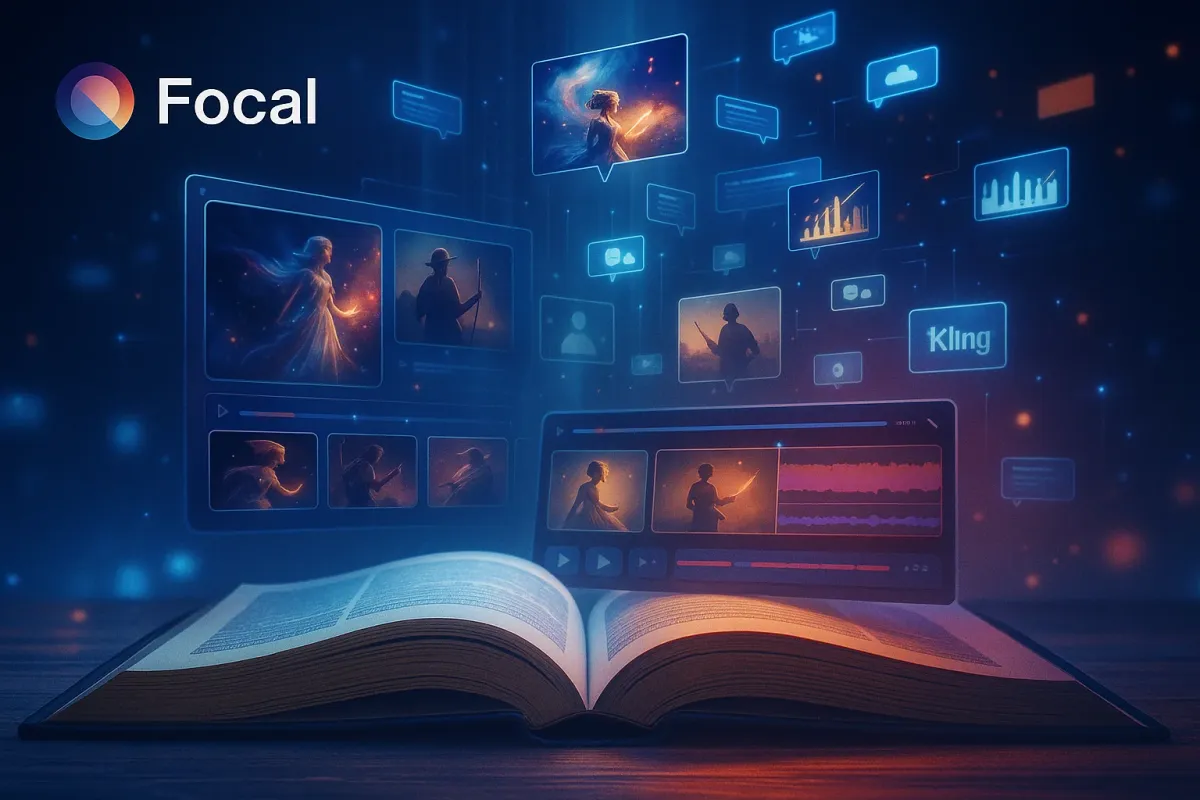Developing Educational Content with Kling AI

Forget whiteboard sketches or stock photo slides—Kling's outputs enable layered, animated, and cinematic explanations that resonate deeply with learners. Teaching ideas better, faster, and more beautifully than you ever could with static media... here's how:
- Real-Time History Visualizations That Feel Alive
- Breaking Down STEM Concepts with Animated Clarity
- Language Learning Through Environment-Driven Contexts
- Transforming Textbooks into Motion-Driven Experiences
- Designing Learning for Neurodivergent Audiences
- Building Assessments That Feel Like Stories
- Rapid Prototyping of Curriculum Visuals
- See What It Feels Like to Teach with Cinematic Precision
Real-Time History Visualizations That Feel Alive
Example: A still image of the signing of the Magna Carta is informative.
Better: A dynamic Kling-rendered scene that reanimates the moment, visually showing power structures shifting between monarchy and the nobles, with labeled overlays and motion-driven annotations.
These aren’t dramatizations for drama’s sake—they create micro-stories inside a moment, helping learners see causality instead of just reading it.
- Illustrates power shifts with cinematic transitions
- Uses lighting and mood to subtly convey historical tension
- Auto-focuses attention on critical characters or objects
Impact: Makes history feel less like “a list of dates” and more like understanding a system in motion.
Breaking Down STEM Concepts with Animated Clarity
Forget the tired “let’s draw it on the board” method. Kling AI outputs let us show complex systems like:
| Subject | Kling Visual Output | Learning Benefit |
|---|---|---|
| Physics | Gravity warping spacetime as dynamic grid | Turns abstract formulas into visual metaphors |
| Chemistry | Molecules reacting in slow-motion 3D | Shows energy transfer in intuitive ways |
| Biology | Cell mitosis unfolding layer by layer | Supports multi-stage comprehension |
By creating cinematic step-by-step visualizations, learners can rewatch and internalize processes without relying purely on rote memory.
Language Learning Through Environment-Driven Contexts
Language isn’t just about vocab. Kling-generated scenes let learners see the language in its cultural and contextual container.
Example: Learning French? Drop into a Kling-rendered Parisian café, where characters speak and gesture naturally. Subtitles sync with speech and visual cues reinforce vocabulary.
Why it works:
- Mimics immersion learning
- Teaches body language and idiomatic context
- Shows real-world object labeling (table = "la table")
Learners don’t just translate—they associate and retain.
Transforming Textbooks into Motion-Driven Experiences
We’ve started prototyping textbook content where the static image sections are replaced with Kling-model sequences. The result?
- Diagrams become animations
- Timelines unfold as stories
- Footnotes are embedded as tap-to-reveal visual digests
Before vs After with Kling Output
| Feature | Traditional | Kling-enhanced |
|---|---|---|
| Diagrams | Static | Animated transitions |
| Key concept highlights | Bold text | Camera zoom/focus |
| Example walkthroughs | Written | Storyboarded and voiced over |
The effect is less like reading and more like experiencing the concept.
Designing Learning for Neurodivergent Audiences
Kling’s output can be styled and scaffolded for sensory control, pacing, and visual layering. This lets you design tailored educational content for learners with ADHD, autism, and dyslexia.
Kling’s contributions:
- Adjustable motion and tempo
- Clean backgrounding to reduce overstimulation
- Text layered with audio and gesture cues
This isn’t about lowering expectations—it’s about matching input to the learner’s processing strengths.
Building Assessments That Feel Like Stories
Not all assessment needs to be quizzes. Kling-generated scenarios let learners make decisions inside a visual story.
Example: In a business ethics module, learners “walk through” a corporate dilemma scene and choose how a character reacts. Feedback appears in-scene, branching into new scenarios.
Benefits:
- Higher engagement
- Contextualized critical thinking
- Real-time feedback embedded in narrative
It’s assessment that evaluates how you think, not just what you know.
Rapid Prototyping of Curriculum Visuals
Educators can now think visually first—you don’t need to wait on animators, illustrators, or media teams. With Kling AI outputs, early-stage curriculum drafts can include:
- Storyboarded concept scenes
- Animated flowcharts of process or logic
- Spatialized metaphors for systems (e.g., “ecosystem as city”)
This gives curriculum designers more freedom to iterate and test what actually clicks with students.
Summary: Kling AI’s Outputs Aren’t Just Pretty—They’re Pedagogically Strategic
- Turn abstract into intuitive
- Convert static into living visuals
- Enable contextualized, narrative-driven instruction
- Allow personalization for learner diversity
- Support scalable, high-quality content across subjects
What we’re seeing is not just “better visuals.” We’re seeing a new literacy—one where dynamic scenes and structured visuals teach on their own, reducing friction and maximizing cognition.
Now See What It Feels Like to Teach with Cinematic Precision
If you’ve ever wished your lessons could just show what you mean—without spending hours in After Effects or storyboarding endlessly—this is your sign to try it differently.
Kling’s visuals aren’t just beautiful, they’re deeply functional. You don’t need to think like a designer; the model takes your concept and returns something that feels smart. Something you can drop right into your lesson flow, a deck, or a quick concept test.
We’ve plugged Kling into our app so you can generate this kind of content on the fly—just one of the models you can play with. Just type what you want your learners to understand—and watch the model bring it to life.
Kling AI works inside Focal to turn explainer scripts into clear, visual lessons with smooth motion and sharp timing.
📧 Got questions? Email us at [email protected] or click the Support button in the top right corner of the app (you must be logged in). We actually respond.
